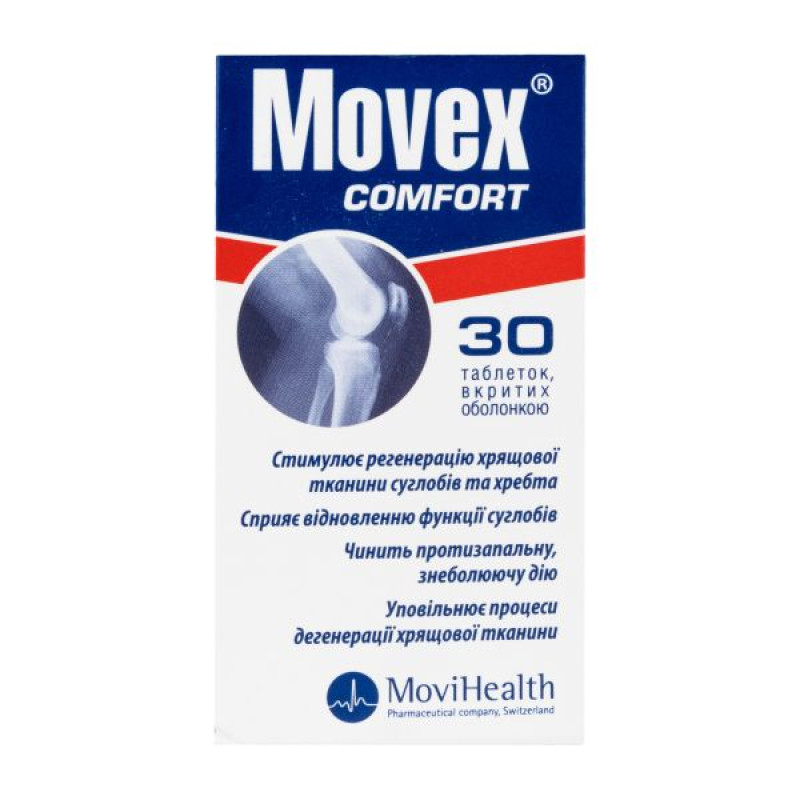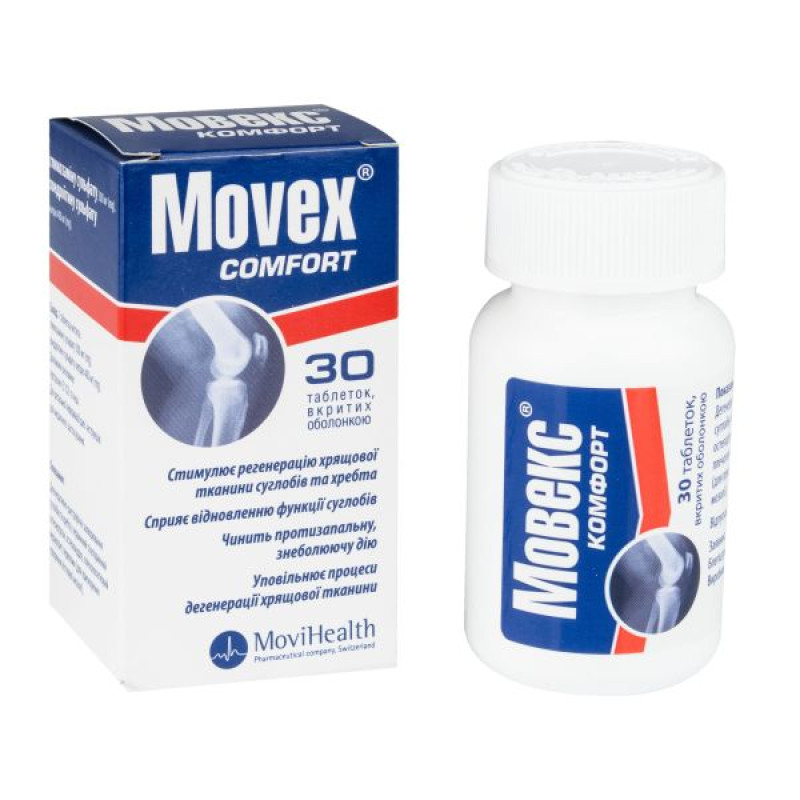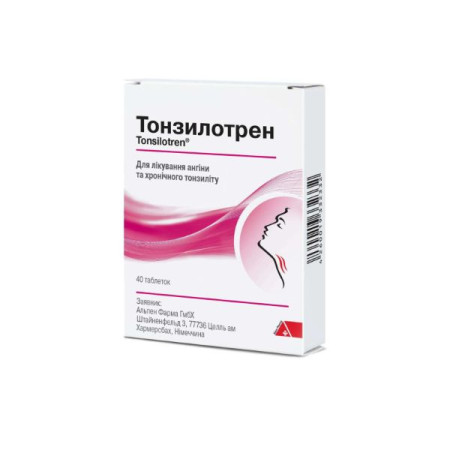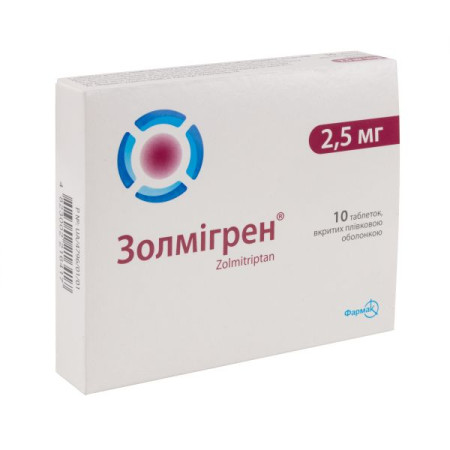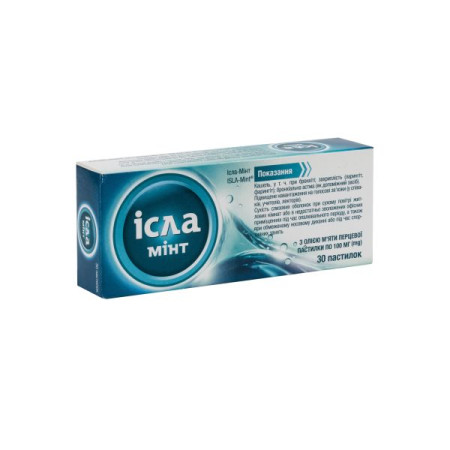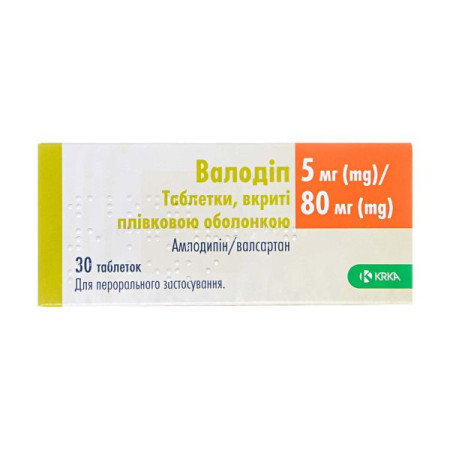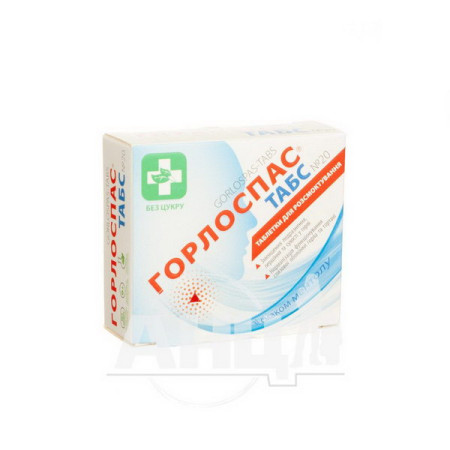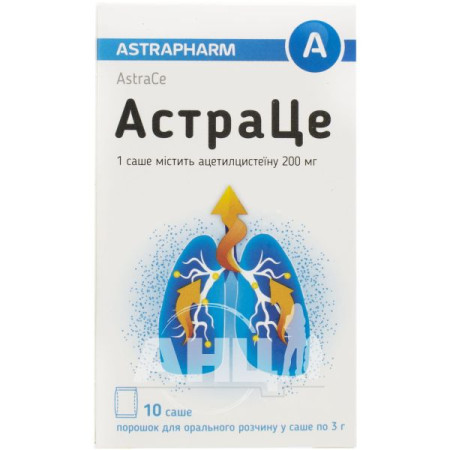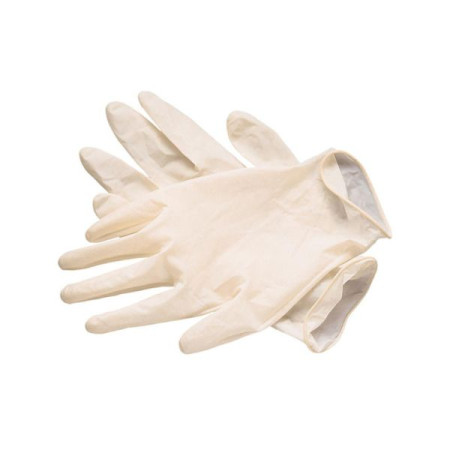Movex comfort film-coated tablets bottle No. 30
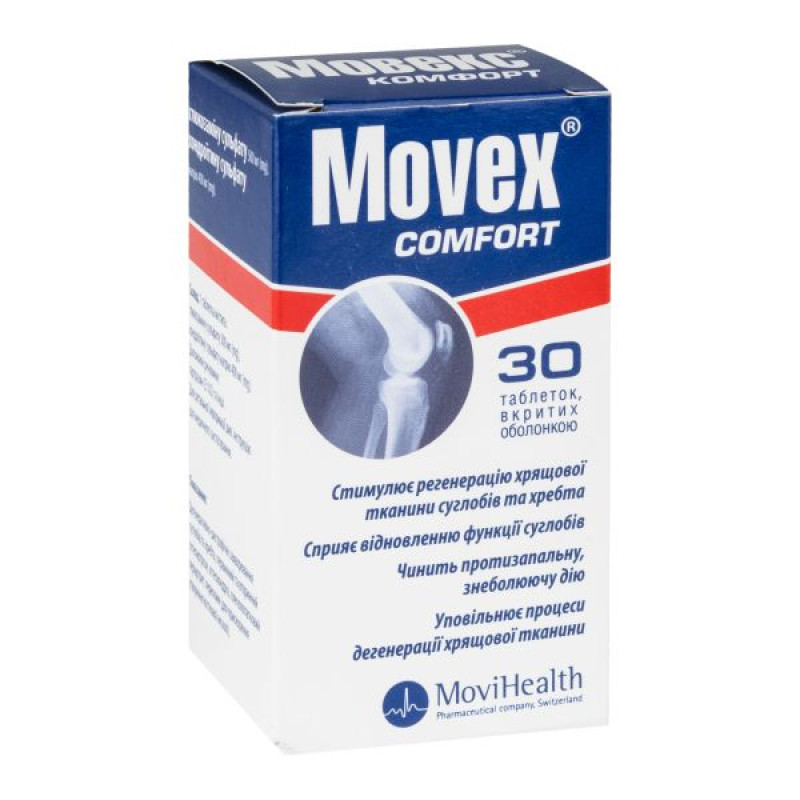
Instructions for Movex Comfort film-coated tablets bottle No. 30
Composition
active ingredients: glucosamine sulfate, chondroitin sodium sulfate;
1 tablet contains glucosamine sulfate 500 mg, chondroitin sodium sulfate 400 mg;
Excipients: microcrystalline cellulose, colloidal anhydrous silica, talc, croscarmellose sodium, sodium starch glycolate (type A), hypromellose, polyethylene glycol 6000, titanium dioxide (E 171), tartrazine (E 102), ethylcellulose.
Dosage form
Film-coated tablets.
Main physicochemical properties: yellow, oval-shaped, biconvex tablets, with a score on one side, coated.
Pharmacotherapeutic group
Drugs used in diseases of the musculoskeletal system. Nonsteroidal anti-inflammatory and antirheumatic drugs.
ATX code M01A X.
Pharmacological properties
Pharmacodynamics
Glucosamine is a substrate for building articular cartilage and stimulates the regeneration of cartilage tissue. Glucosaminoglycans and proteoglycans are part of the complex matrix that makes up cartilage.
Glucosamine is a component of endogenous glycosaminoglycans of cartilage tissue, stimulates the production of proteoglycans and increases the absorption of sulfate by articular cartilage.
Thus, glucosamine replenishes the endogenous deficiency of glucosamine. It participates in the biosynthesis of proteoglycans and hyaluronic acid, thereby counteracting the progression of degenerative processes in the joints, spine and surrounding soft tissues; stimulates the formation of chondroitin sulfate, normalizes calcium deposition in bone tissue, contributes to the restoration of joint functions and the disappearance of pain syndrome.
Chondroitin sulfate sodium has a chondroprotective effect, stimulates the regeneration of cartilage tissue, exhibits anti-inflammatory, analgesic effects. Chondroitin sulfate sodium, which affects the phosphorus-calcium metabolism in cartilage tissue, is a high-molecular mucopolysaccharide (m.w. 20,000–30,000). The drug slows down bone resorption and reduces calcium loss, slows down the processes of cartilage degeneration. Prevents compression of connective tissue, "lubricates" articular surfaces and normalizes the production of joint fluid.
Pharmacokinetics
Glucosamine sulfate. The bioavailability of glucosamine when administered orally is 25–26%. After distribution in tissues, the highest concentrations are determined in the liver, kidneys and cartilage. Approximately 90% of glucosamine, which entered the body orally, is absorbed from the small intestine in the form of glucosamine salt and from there through the portal circulation enters the liver. A significant part of the absorbed glucosamine is metabolized in the liver, disintegrating into urea, water and carbon dioxide. About 30% of the dose taken persists in the connective tissue for a long time. It is excreted mainly by the kidneys and in a very small amount - with feces.
Chondroitin sodium sulfate. After a single dose of chondroitin, the maximum concentration in blood plasma (Cmax) is reached after 3–4 hours, in synovial fluid – after 4–5 hours. The concentration in synovial fluid exceeds the concentration in blood plasma. The bioavailability of chondroitin sodium sulfate is 13–15%. It is excreted by the kidneys within 24 hours.
Indication
Degenerative-dystrophic diseases of the joints and spine; primary and secondary osteoarthritis, osteochondrosis, shoulder-scapular periarthritis; fractures (to accelerate the formation of bone callus).
Contraindication
Hypersensitivity to any of the components of the drug, impaired liver or kidney function in the stage of decompensation, tendency to bleeding. Do not use the drug if you are allergic to shellfish.
Interaction with other medicinal products and other types of interactions
With simultaneous use, the absorption and serum concentration of tetracyclines may increase, but the clinical significance of this interaction has not been established; the absorption of penicillins and chloramphenicol may decrease.
When using the drug, the need for non-steroidal anti-inflammatory drugs is reduced.
The drug may enhance the effect of anticoagulants (oral vitamin K antagonists, including warfarin), which requires monitoring of coagulation parameters during concomitant use. May affect the blood concentration of cyclosporine and warfarin.
Application features
Do not exceed the recommended dose.
In patients with diabetes mellitus and patients with impaired glucose tolerance, it is advisable to monitor blood sugar levels more frequently at the beginning and during the use of the drug.
In patients with a known risk factor for cardiovascular disease, monitoring of blood lipid levels is recommended, as cases of hypercholesterolemia have been reported during treatment with glucosamine.
The drug should be used with caution in patients with asthma, as such patients may be more prone to developing allergic reactions to glucosamine with possible exacerbation of symptoms of their disease.
Use only under medical supervision in patients with thrombophlebitis.
In rare cases, edema and/or water retention have been observed in patients with heart and/or renal failure.
This may be due to the osmotic effect of chondroitin sulfate.
This medicinal product contains 2.2 mmol sodium per tablet. Caution should be exercised when used in patients on a controlled sodium diet.
The dye tartrazine (E 102) may cause allergic reactions.
Ability to influence reaction speed when driving vehicles or other mechanisms
No studies have been conducted on the effect of the drug on the reaction rate when driving vehicles or other mechanisms. Caution should be exercised when driving vehicles and performing work that requires attention.
If drowsiness, fatigue, dizziness and/or visual disturbances occur during use of the drug, you should refrain from driving or operating other mechanisms.
Use during pregnancy or breastfeeding
Due to the lack of clinical data on the efficacy and safety of the drug during pregnancy or breastfeeding, the drug should not be used during this period.
Method of administration and doses
Take the tablets orally, with a small amount of liquid.
During the first 3 weeks, use 1 tablet 3 times a day; then 1-2 tablets 2 times a day for 3 months.
Repeat the course 2-3 times a year.
Treatment may be longer as prescribed by a doctor.
Children
There is no experience with the use of the drug in children, use is not recommended.
Overdose
Possible increase in side effects. In case of overdose, symptomatic treatment is recommended.
Adverse reactions
Gastrointestinal: dyspepsia, nausea, vomiting, epigastric pain, diarrhea, constipation, intestinal bloating.
Skin and skin structures: dermatitis, hair loss.
On the part of the immune system: allergic reactions, including skin rashes, urticaria, hyperemia, eczema, itching, angioedema.
From the nervous system and sensory organs: headache, general weakness, drowsiness, insomnia, increased fatigue, dizziness, visual disturbances.
Other: edema.
All side effects disappear after discontinuation of treatment.
Expiration date
3 years.
Storage conditions
Store out of the reach of children in the original packaging at a temperature not exceeding 25 °C.
Packaging
30, 60 or 120 tablets in a bottle, 1 bottle in a cardboard box;
2 bottles of 60 tablets in a cardboard box.
Vacation category
Without a prescription.
Producer
Meditop Pharmaceutical Ltd., Hungary
Location of the manufacturer and its business address
Hungary, Edi Endre y. 1., Pilisboroszeno, 2097.
There are no reviews for this product.
There are no reviews for this product, be the first to leave your review.
No questions about this product, be the first and ask your question.







